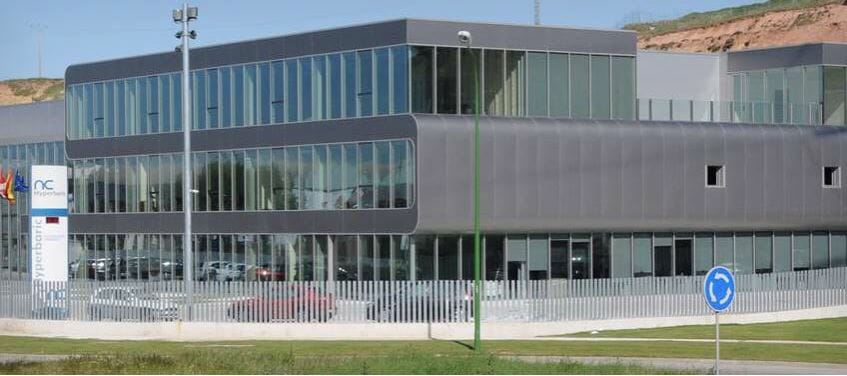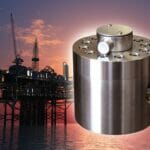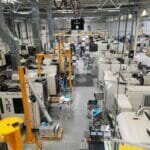Spanish company Hiperbaric designs, develops, manufactures and delivers worldwide high-pressure processing equipment for the worldwide food industry.
According to Carole Tonello PhD, Hiperbaric Applications Manager, “High Pressure Processing (HPP) technology is an alternative to traditional heat pasteurisation and sterilisation processing.
The high pressure process maintain the food’s organoleptic and nutritional properties better than traditional preservation process, the shelf life of fresh products to be extended without any preservative or chemical additives.”
Thanks to its high versatility, this technology can be applied to a wide range of foods. Its main applications include boiled and cured meat products, sliced food, ready-cooked meals, dips, hummus, guacamole and sauces, juices and natural beverages, fish and seafood products and dairy products.
However, this technique can also be applied in other applications yet to be exploited.
“The potential of this technology has not reached its peak yet, so we forecast further gains also in the cosmetics industries to develop products with natural active ingredients without chemical additives,” points out Tonello.
Hiperbaric is currently the world’s leading provider of the equipment and is at the forefront of the technology. Year after year, more than 90% of its revenue comes from exports.
In fact, the company operates in 40 countries, with its main markets being North America, the European Union, Japan, Korea, Australia and New Zealand.
Hiperbaric’s equipment stands out for its design, including the introduction of horizontal distribution.
Other features include the use of advanced components and materials coupled to technology that increases the machine’s durability, speed and reliability, with an easily cleanable structure, greater hygiene and high integration into the food processing environment.
The company currently manufactures five different models (Hiperbaric H55, H135, H300, H420, and H525), which differ according to their processing capacity.
“The model names stem from the capacity (in litres) of the vessels where the foods and beverages are placed. The higher the capacity, the higher the food processing throughput,” states Luis Ángel Ramos, Manager of the Software & Hardware Department at Hiperbaric.
All models share a design based on three main sections. “The first section is the structure, which is where the vessel is placed and where the products are processed.
The second section is the intensifier, the element that increases the pressure in the machine, usually up to 87.000 psi. And the third section is the container input and output system, in which the product is processed,” explains Ramos.
The bigger is the machine, more foods can be processed, although it will need more intensifiers to reach maximum pressure in reasonable time.
The primary challenge faced by Hiperbaric is the integration of all the components that shape the machines in order to provide higher reliability and productivity with great energy efficiency coupled with easier integration into the production chain.
In addition to this integration challenge is the need to be able to manage the equipment easily and the option of modifying specific parameters remotely.
Hiperbaric has addressed these challenges by implementing a Rockwell Automation® Integrated Architecture® control & information system, which thanks to its advanced integration and networking capabilities, can interface with a plant-wide Connected Enterprise solution.
At the heart of the equipment, is an Allen-Bradley® ControlLogix® controller with security certification and EtherNet/IP™ network connectivity. In addition, there are a number of Allen-Bradley POINT I/O™ modules in the control panel and distributed on other parts of the machine, which are used to read analogue and digital signals.
Allen-Bradley PowerFlex® 525 AC drives are used to control the motors and low-voltage components, such as switchgear, are also widely used throughout the machines.
Finally, the operator panels used on the machine and the modules are 15 inch (main screen) and seven inch (ancillary screens) Allen-Bradley PanelView™ Plus 6 HMI graphic terminals.
“We have added a tManager® data transfer module,” explains Ramos, “from Softing, Rockwell Automation PartnerNetwork™ Encompass Product partner.
This module is used to transfer data between the SCADA system and the ControlLogix controller in each machine.
This offers the storage of data coming from the food processing, which helps confirm that any relevant information isn’t lost, and the food has been properly processed.”
Hiperbaric selected this module because the company was searching for “a system not only capable of delivering high data integrity, but also capable of supporting the data-gathering requirements of the SCADA system,” states Ramos.
“This is not available as software and, as hardware, it was the only suitable, compact solution required to reduce the size and complexity of the machines in the industrial environment.”
Once the modules were installed, the Softing team made itself available to provide help and collaboration. For Ramos, a key point was having quick and reliable responses to solve any issues and to develop further improvements.
Currently Hiperbaric is working on the next steps to optimise the processes in the machines. “We plan a set of improvements we hope to implement in the near future in the equipment, according to our experience and needs,” confirms Ramos.
Enhanced operational intelligence and increased productivity are two of the primary facets of the Rockwell Automation Connected Enterprise.
Thanks to the integrated architecture approach, Hiperbaric and its customers can access, analyse and act on production data in real time, while productivity is enhanced due to the seamless integration of all the interconnected systems.
One impressive benefit Hiperbaric is enjoying, thanks to the addition of all the Rockwell Automation elements, is the network connectivity delivered by EtherNet/IP.
“This allows all the components in the machine to be interconnected, as well as offering our customers some features that otherwise would be impossible.
For example, operators can carry out certain operations from the intensifier’s screen, without having to access the main screen, since everything is connected by EtherNet/IP,” comments Ramos.
This connectivity also allows remote-management to be performed from the Hiperbaric offices.
According to Tonello PhD : “We can connect from any PC to all the machines we have distributed worldwide, and since all key elements are in the network, we can access any of them for diagnostics, see configurations, and enter changes… For us this is undoubtedly a very powerful tool.”
These benefits can be translated to the end customer too.
They see greater simplicity and convenience to manage the equipment and even a chat system gives operators next to the machine the ability to talk to the Hiperbaric technical team to change parameters in situ or to solve any event – helping reduce downtime.
“This is a powerful feature of our machines that our customers know and value. It should be taken into account that we have more than 200 machines distributed worldwide, and all of them benefit from 24/7 remote assistance thanks to our technical teams in Spain, the US and Australia.
As a result, we can offer a streamlined diagnostics and troubleshooting service,” concludes Tonello.








